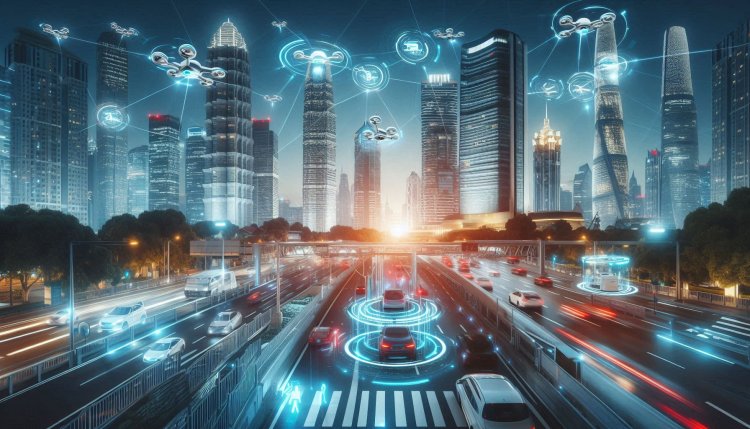The Future of Wind Energy Technology
Explore the latest advancements in wind energy technology and discover how it's shaping the future of sustainable energy production.

The Future of Wind Energy Technology
Wind energy has been harnessed for centuries, but in recent years, advancements in technology have transformed the way we generate electricity from wind. As the world transitions towards cleaner and more sustainable sources of energy, wind power has emerged as a key player in the renewable energy sector. Looking ahead, the future of wind energy technology holds great promise for further innovation and growth.
1. Advancements in Turbine Design
One of the most significant developments in wind energy technology is the evolution of turbine design. Modern wind turbines are much larger and more efficient than their predecessors, with taller towers and longer blades that can capture more energy from the wind. The use of advanced materials and aerodynamic designs has also improved the performance of turbines, allowing them to operate more effectively in a wider range of wind conditions.
2. Offshore Wind Farms
Offshore wind farms represent another exciting frontier in wind energy technology. By harnessing the strong and consistent winds found at sea, offshore wind projects have the potential to generate large amounts of electricity with minimal impact on land use. As technology continues to improve, offshore wind farms are becoming increasingly cost-effective and efficient, making them an attractive option for countries looking to expand their renewable energy capacity.
3. Energy Storage Solutions
One of the challenges of wind energy is its intermittent nature, as the wind does not always blow at a consistent speed. To address this issue, researchers are exploring innovative energy storage solutions that can store excess energy generated by wind turbines for use when the wind is not blowing. Technologies such as battery storage, pumped hydro storage, and hydrogen production are being developed to help integrate wind power into the grid more effectively.
4. Digitalization and Data Analytics
The integration of digital technologies and data analytics is revolutionizing the way wind farms are operated and maintained. By using sensors, IoT devices, and advanced analytics algorithms, operators can monitor the performance of wind turbines in real-time, predict potential issues before they occur, and optimize energy production. This level of digitalization not only improves the efficiency of wind farms but also reduces maintenance costs and downtime.
5. Floating Wind Turbines
Floating wind turbines are a cutting-edge technology that has the potential to unlock new opportunities for wind energy generation in deep waters where fixed-bottom turbines are not feasible. By floating on the surface of the water, these turbines can access stronger and more consistent winds, increasing their energy output. As the technology matures, floating wind farms could become a significant source of renewable energy in offshore locations around the world.
6. Hybrid Energy Systems
Integrating wind power with other renewable energy sources, such as solar and hydropower, can create hybrid energy systems that are more reliable and resilient. By combining different technologies, these systems can balance out fluctuations in energy production, ensure a steady power supply, and reduce overall costs. As the demand for clean energy grows, hybrid energy systems are expected to play a key role in the future energy landscape.
7. Community Wind Projects
Community wind projects are gaining popularity as a way to engage local communities in renewable energy development and ownership. These projects involve the installation of small to medium-sized wind turbines that are owned and operated by local residents or organizations. Community wind farms not only provide clean energy to the grid but also create economic opportunities and foster a sense of community involvement in the transition to renewable energy.
8. Artificial Intelligence and Machine Learning
Artificial intelligence and machine learning algorithms are being applied to optimize the operation of wind farms and improve their performance. By analyzing vast amounts of data collected from sensors and turbines, AI systems can identify patterns, predict maintenance needs, and make real-time adjustments to maximize energy production. The use of AI in wind energy technology is expected to drive further efficiency gains and cost reductions in the years to come.
9. Grid Integration and Smart Grid Technologies
As the share of wind energy in the electricity mix continues to grow, grid integration becomes increasingly important to ensure the stability and reliability of the power system. Smart grid technologies, such as advanced grid monitoring systems, energy management software, and demand response programs, can help utilities manage the variability of wind power and optimize its integration into the grid. By improving grid flexibility and resilience, these technologies support the further expansion of wind energy capacity.
What's Your Reaction?

















